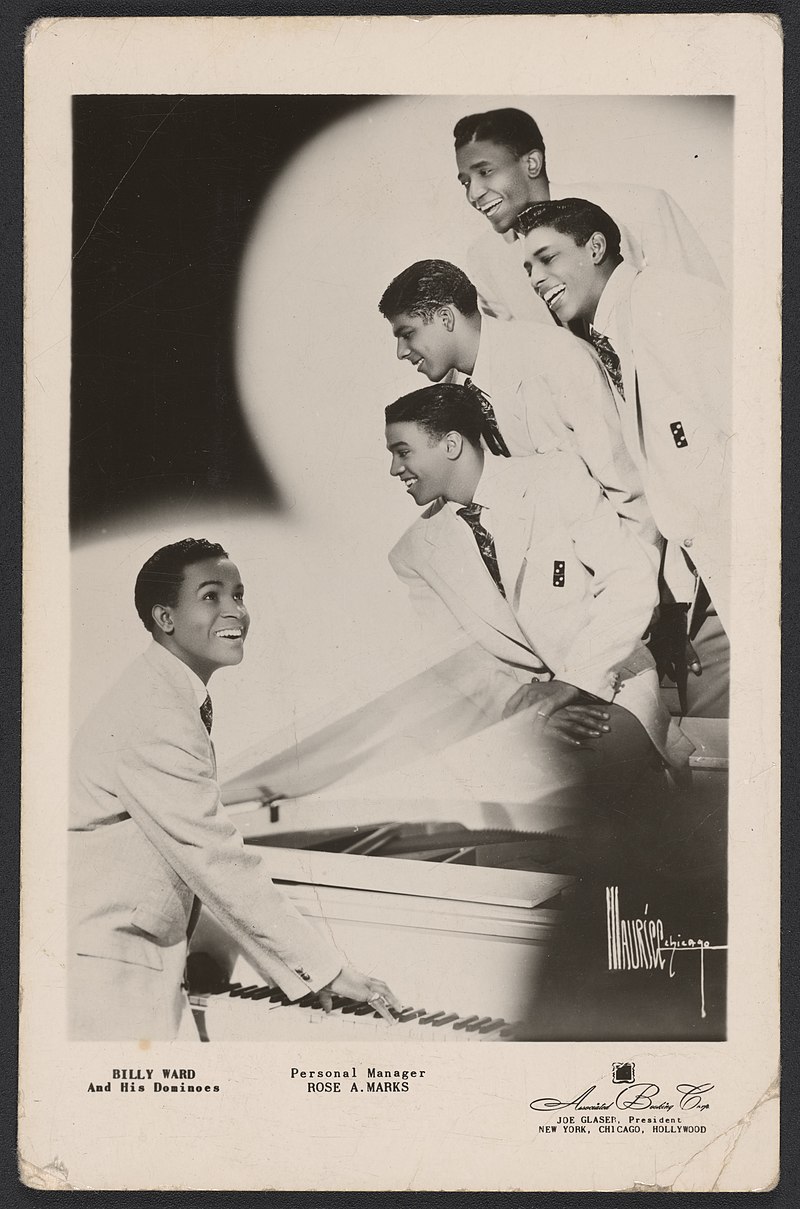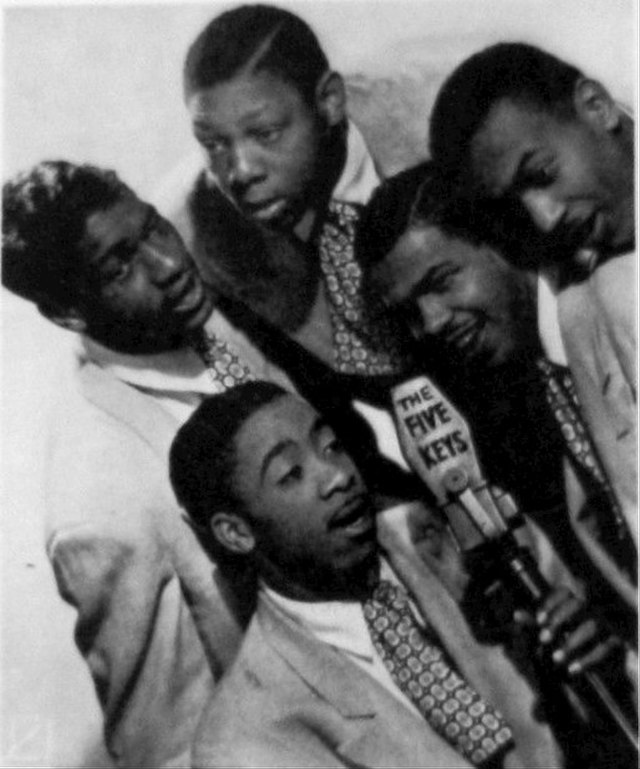
Styles: Doo-Wop 1
Quartet singing has its roots as far back as the late nineteenth century as a social pastime, particularly among young African American males. However, many groups found moderate success during the Golden Age of Gospel Music (1945-1965). Such success was more apparent in religious contexts such as churches, religious music festivals, Sunday religious radio services, and sometimes, in secular settings. Their acclaim, however, could not compete with the rising popularity of secular styles such as rhythm and blues and rock and roll as disseminated through radio, TV, and charts from professional trade journals such as Billboard. Fortunately, the crossover phenomenon during this time provided a way for some quartet groups such as Billy Ward and The Dominoes, The Five Royals, and The Soul Stirrers to crossover to the secular industry, and thus gain success on rhythm and blues music charts and eventually on the more significant chart, pop. These and others were known as doo-wop groups.
The popularity and effect of doo-wop on rhythm and blues, and the ensuing style of rock and roll, cannot be underestimated. By 1954 "Sh-Boom" by The Chords was on the R & B chart and had crossed over to the pop chart, thus making this doo-wop group the first to have a hit on the far-reaching pop chart. Combining the crossover phenomenon with the popularity of doo-wop, White doo-wop groups began to cover Black groups. Consequently, their music was aired on clear watts or mainstream stations, reaching an even larger audience. However, many in mainstream America were not aware of these songs' origin and thus assumed White artists wrote them. Notice in the video "Voices of Doo-Wop" at 16:15 where one of The Chords' original members speaks about "Sh-Boom," and the group's experience of learning that there were those who were not aware the group was Black.

Voices of Doo-Wop [ 00:00-00:00 ]
Post-war doo-wop took place around the large urban centers of the North and East Coast. However, every major city with a Black population had numerous teenagers singing doo-wop on street corners, in the hallways of apartment buildings, in school washrooms and gyms, and under bridges. Teenagers formed doo-wop groups anywhere they could assemble and get a substantial amount of reverb. The Ravens and the Orioles were seminal early doo-wop groups, both hitting the charts in 1948, quickly followed in the early 1950s by the Five Keys, Billy Ward and the Dominoes, The Cadillacs, and The Chords. Although generally referred to as quartet singing style, these groups consisted of four or five singers. Their singing, often described as three-part linearity, includes a lead singer (frequently a tenor), two/three singers harmonizing (often two tenors and a baritone), and a bass singer.
Sh-Boom
Oh, life could be a dream
(Sh-boom)
If I could take you up in paradise up above
(Sh-boom)
If you would tell me I'm the only one that you love
Life could be a dream, sweetheart
Sweet Lorraine
Just found joy
I'm as happy as a baby boy,
baby boy
With another brand new
choo-choo choy
When I met my sweet Lorraine, Lorraine, Lorraine







